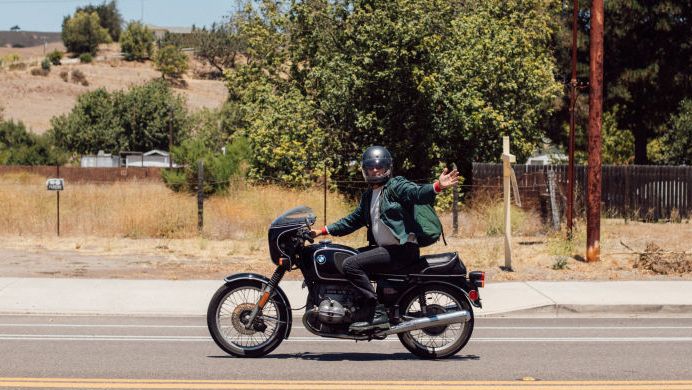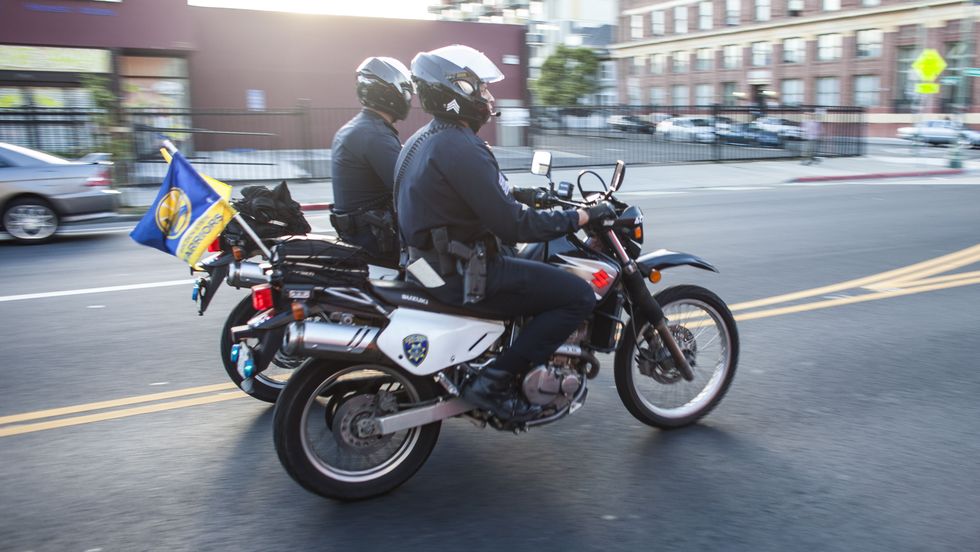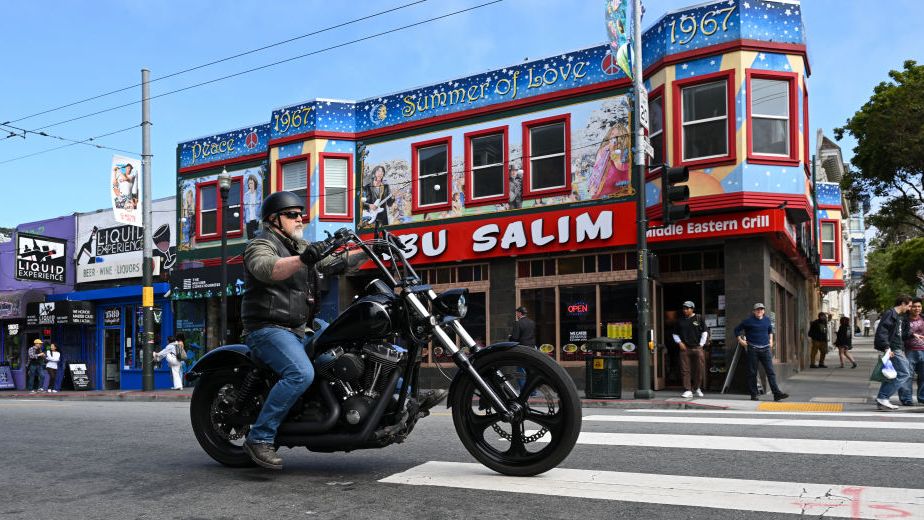- Motorcycling is continuing to grow in popularity but the rate of accidents and fatalities is rising alongside, the Insurance Institute for Highway Safety says.
- However, there are some common-sense safety measures that can protect riders, according to crash statistics.
- At a federal level, however, the IIHS says regulators and state lawmakers could do more to keep motorcyclists safe, from helmet laws to advanced driver-assistance technologies.
Back in 2021, around 6000 motorcyclists died on US roads, marking an all-time high for domestic two-wheeled travelers. That’s a 21% increase since 2019 and triple the fatality rate compared to 1997, with motorcyclists accounting for 14% of all traffic fatalities in 2021.
With statistics like these, it can be hard for outsiders to understand why one would want to ride a motorcycle or how motorcyclists can stomach hitting the open road every day. But the Insurance Institute for Highway Safety says motorcyclists aren’t taking risks just for the fun of it. Many are just looking for an economical means of transportation, ultimately.
“Motorcyclists are often labeled as risk-takers, so perhaps that’s why our society continues to accept this loss of life. It’s true that riding involves extra risk compared with driving passenger vehicles, but it’s possible to reduce the risk without diminishing the joys and thrills that define motorcycling,” writes Eric Teoh, Director of Statistical Services at IIHS.
Helmets Save Lives, Period.
Top of the list for improving motorcycling safety is mandating helmets nationwide, says Teoh. Only 18 states require all riders regardless of age to wear helmets, with 30 states setting low age requirements for helmet usage, primarily focusing on children wearing helmets. Only three states have no helmet laws at all.
The IIHS says properly designed helmets reduce the likelihood of death by about 40% and the risk of traumatic brain injury by two-thirds. Additionally, the data contrast between states that have helmet mandates and states that don’t is clear. Let’s take two states where riding is popular and can be done year-round, as an example.
Texas only requires helmets for riders 20 years old and younger and had 496 motorcycle fatalities in 2021. That’s a rate of 13 deaths per every 10,000 motorcycles registered in Texas, according to NHTSA data. By comparison, helmet-mandatory California had 552 deaths in 2021, but a rate of 5.8 deaths per every 10,000 motorcycles registered.
Notably, around 850,000 motorcycles are currently registered in California, indicating the rate of death compared to the amount of riders is considerably lower in California than in Texas. But the weather doesn’t have to be good year-round for this statistical trend to stick.
Massachusetts is a helmet mandatory state while neighboring Connecticut only requires helmets for riders 17 years old and under. In 2021, Massachusetts posted 66 motorcyclist deaths and 4.5 deaths for every 10,000 bikes registered while Connecticut roads claimed the lives of 64 riders, but with a rate of 7.3 deaths per every 10,000 registered.
In this case, Massachusetts posted a lower death rate than Connecticut in a year that saw a 27% increase in fatalities from the year prior, indicating that numbers in the New England state were historically lower. The World Health Organization also believes in a mandate, as global data shows motorcycle helmets reduce the chance of brain injuries by up to 74%.
Slowing Down Made Easier
Antilock brakes have been federally mandated in passenger vehicles since 2012 and in large trucks since 1997, but no mandate for motorcycle ABS exists. The IIHS believes this is the next step in reducing motorcycle fatalities, citing studies from the National Transportation Safety Board showing ABS reduces crash rates and crash severity.
“The proliferation of motorcycle ABS over the past two decades is a bright spot in the otherwise grim safety picture. We’ve gone from having almost no motorcycles with standard ABS in 2003 to about two-thirds of 2023 models with standard ABS,” the IIHS report says.
There is legal precedent for this move as well, as a handful of governing bodies have mandated ABS for road-going motorcycles. The list includes all European Union member states, the United Kingdom, Brazil, Japan, Taiwan, Australia, New Zealand and India. Additionally, the institute says there is strong customer demand for ABS, too.
In practice, ABS may be as polarizing as helmet mandates for some motorcyclists. While it allows for harder braking, particularly in emergency scenarios, others believe it can give riders a false sense of security in terms of braking distance. Ultimately, the point of ABS is to reduce stopping distance and let riders maneuver around an obstacle.
But the IIHS says there is overwhelming evidence that ABS improves rider safety, too. After analyzing fatal crash rates for 65 different motorcycle types, the institute found bikes with ABS had 22% fewer fatal crashes per 10,000 registered vehicles. And for many new riders, it seems like a no-brainer safety feature.
A handful of experienced riders will surely lobby manufacturers to allow switchable rear ABS on off-road capable bikes, as a slippery rear end can be a useful tool in the right scenarios. That said, there is no safety argument to be made for letting us slide the rear end on the street, unfortunately.
Visibility Is Key, and Not Just For Drivers
Advanced driver-assistance systems (ADAS) are all the rage these days, with manufacturers like Mercedes-Benz flaunting an SAE Level 3 semi-autonomous driving program. Honda is even prototyping motorcycle-specific ADAS technology for its new passenger vehicles, aiming to limit the amount of collisions between cars and motorcycles.
However, there is already evidence that most ADAS technology is inept at identifying motorcycles and bicycles. Tesla’s SAE Level 2 Autopilot system has been accused of misidentifying motorcycles as cars in the distance due to their single tail light, leading to two fatal rear-end collisions in California—rear-end collisions happening at highway speed, mind you.
Additionally, as the NHTSA pushes for the development of the first pedestrian crash test safety standards, the federal agency admitted that bicycles weren’t included in this round. Why? Well, there are not widely accepted objective test procedures for crashworthiness bicyclist protection evaluation, the report reads.
As such, it seems that two-wheeled vehicles aren’t readily identifiable by many safety systems, save for Subaru and General Motors. But what if they were? With automatic emergency braking soon to be federally mandated, the IIHS says motorcycles need to be included in these braking calibrations. No plan to include motorcycles currently exists.
Similarly, many motorcycle crashes happen when a vehicle turns left in front of them, with these drivers often saying they didn’t see the biker. Years of eyeball science prove this to be largely true; fast-moving objects smaller than those around them can be particularly challenging for human eyes to acknowledge.
However, most left-turn assist systems use a camera and other sensors to detect oncoming vehicles when the driver signals a left turn. As such, the institute proposes that manufacturers incorporate motorcycle identifiers into their forward collision and cross-traffic alert systems as Honda has previously presented.
Take It Easy, Please
Finally, the IIHS explains that riders have a responsibility to themselves. As tempting as it is to twist the throttle wide open, the institute implores riders to take it easy and stick to lower speeds. Going slower not only allows for more reaction time and distance but can keep you out of a sticky situation in the first place.
We’ve previously covered how lower speed limits aid in driver and pedestrian safety, and the IIHS says that raising speed limits works the opposite way. Rising speed limits in certain Western and Southern states have resulted in increased road fatalities year-over-year since the 1980s.
“As they enjoy the thrills of the road, I encourage riders to avoid underestimating what could go wrong,” Teoh writes. “Even the best motorcyclist can’t control the actions of other road users, so it’s essential that riders avoid speeding and alcohol impairment and protect themselves.”
Do you wear a helmet when you ride a motorcycle? If not, why? Please share your thoughts below.
Associate Editor
A New York transplant hailing from the Pacific Northwest, Emmet White has a passion for anything that goes: cars, bicycles, planes, and motorcycles. After learning to ride at 17, Emmet worked in the motorcycle industry before joining Autoweek in 2022. The woes of alternate side parking have kept his fleet moderate, with a 2014 Volkswagen Jetta GLI and a 2003 Honda Nighthawk 750 street parked in his South Brooklyn community.
Read the full article here







